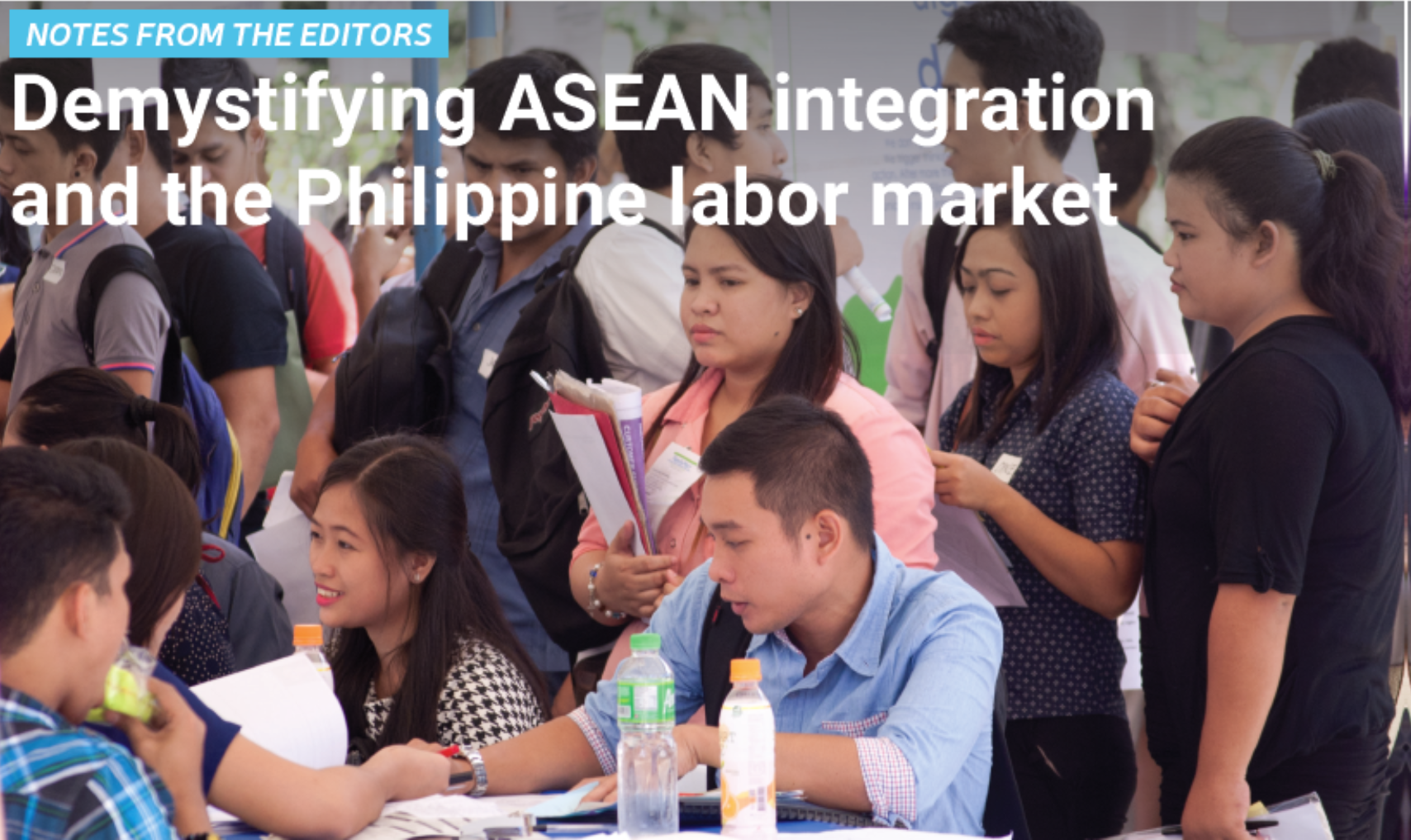
“There is nothing mystical about the ASEAN Economic Community (AEC), because the way to succeed there, internationally, is to do the things that we need to do anyway as a nation.”
This was the synthesis of Emmanuel Esguerra, NEDA Deputy Director-General for Policy and Planning, in a forum that gathered labor and regional integration experts to discuss the Philippine jobs challenge in line with the integration of the 10-member Association of Southeast Asian Nations (ASEAN).
By 2016, ASEAN—which covers only three percent of the Earth’s land area and eight percent of world population—will consolidate into an economic, politicalsecurity and sociocultural community. Currently, it is already a formidable economic bloc. Next to China and Japan, its combined gross domestic product (GDP) last year was the third largest in Asia, growing by more than 300 percent from 2001 to 2013. With freer trade and almost 90 percent compliance with integration commitments, the AEC is not just approaching: it is already here.
The AEC has consequences on the Philippine labor market. Ideally, having a single regional market and production base will spur domestic jobs generation. This, however, is not automatic. Unless structural and policy changes are implemented locally, high unemployment and underemployment will persist.
This DevPulse issue tackles policy imperatives to improve the country’s labor situation in order to take better advantage of the opportunities in AEC, as recommended by experts who include an economics professor and former Cabinet official, researchers from the government’s think tank, and a labor department official.
The first article discusses policies addressing the “skills challenge” Filipinos will face due to free movement of ASEAN workers. The second story highlights the need to create an environment of openness and fair competition to allow freer flow of investments. Minimizing foreign equity restrictions continues as a theme in the third and final article, along with paradigm shifts for farmers and entrepreneurs, in seizing the advantages of free trade. As Esguerra noted, most, if not all, recommendations in this issue’s articles are already outlined in the Philippine Development Plan (PDP) for 2011-2016.
This only reaffirms the Plan’s importance as the overarching guide for every policymaker in attaining inclusive growth for all Filipinos.
Click here to download a PDF copy of the NEDA DevPulse Vol. 17 No. 1 2nd Semester 2014 issue.



